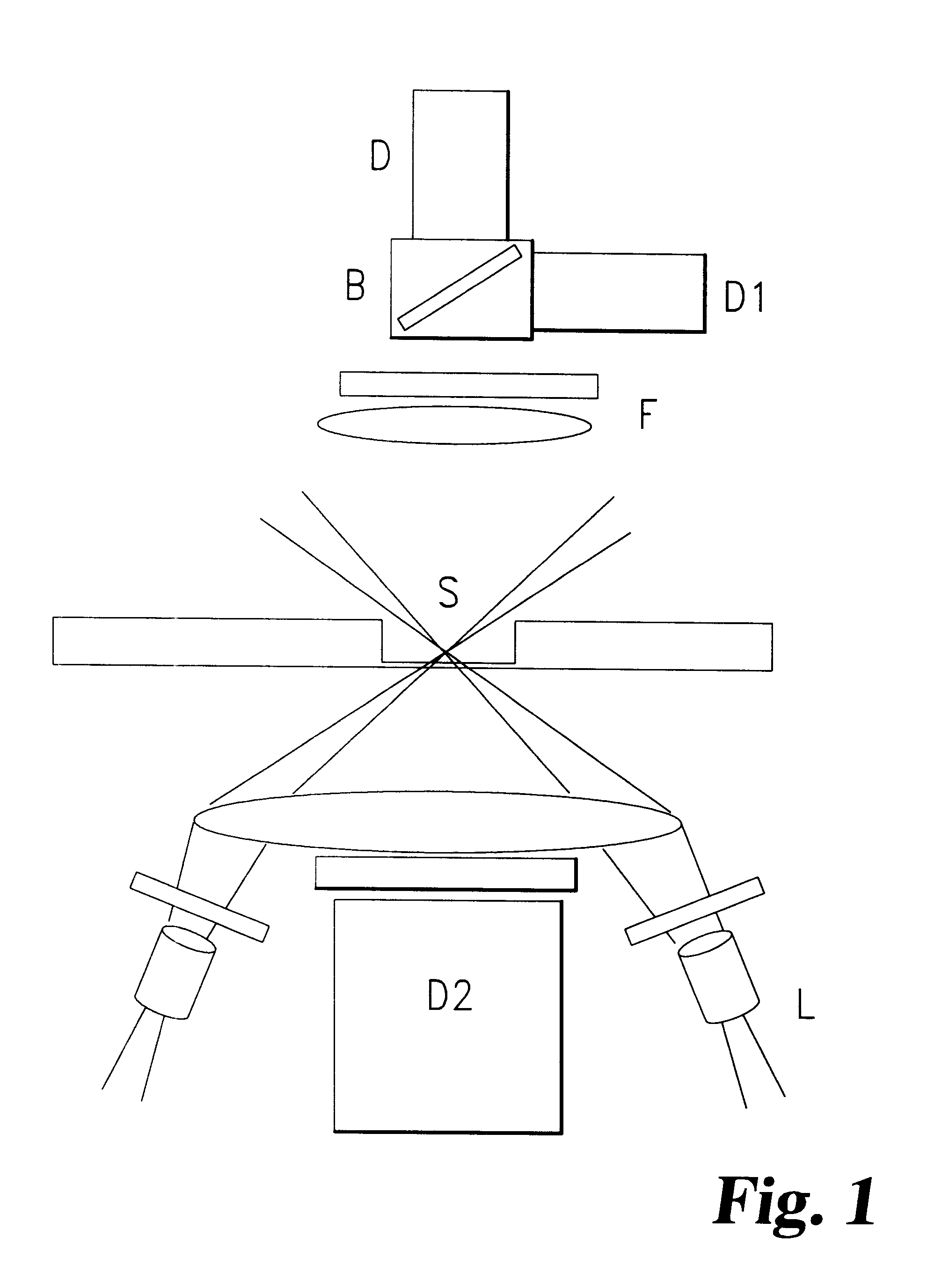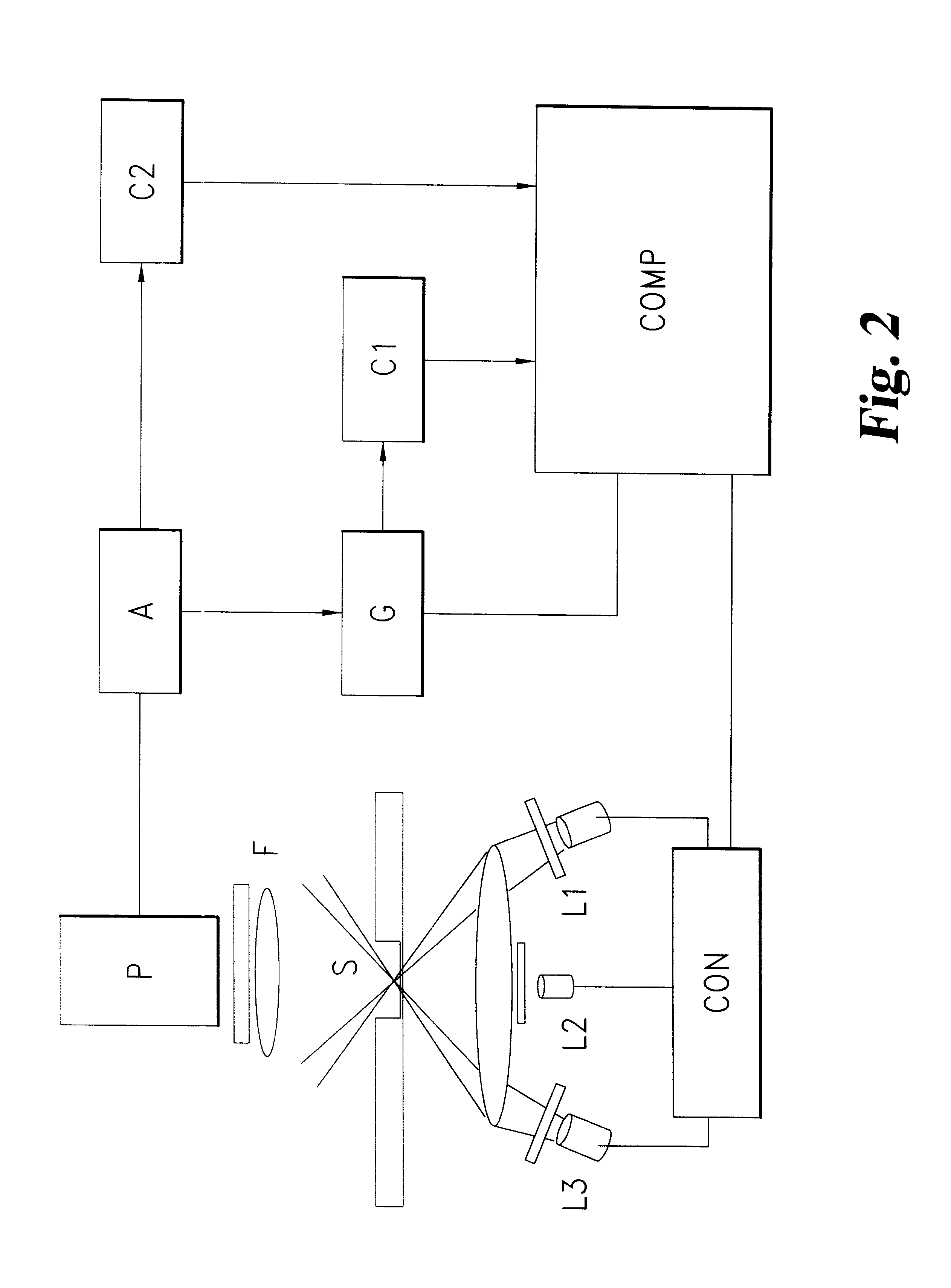Luminescence assay using cyclical excitation wavelength sequence
- Summary
- Abstract
- Description
- Claims
- Application Information
AI Technical Summary
Benefits of technology
Problems solved by technology
Method used
Image
Examples
Embodiment Construction
)
The invention provides a means to enhance discrimination between emission from the acceptor species which is directly excited by the radiation used primarily to excite the donor and acceptor emission which is sensitised by transfer of energy from the donor. The sensitised emission from the acceptor will have the same temporal signature as tat from the donor whereas the directly excited emission will differ in its temporal fluctuation.
The invention also provides improved rejection of emission from luminescent contaminants in the sample. Detection of a characteristic fluctuation narrows the detection bandwidth relative to unfiltered detection and allows efficient detection of the signals of interest with good rejection of background emission.
The degree of discrimination that can be achieved will depend on the relative bandshapes of the excitation profiles for donor and acceptor species within the wavelength region spanned by the excitation sequence. It will often be advantageous to m...
PUM
 Login to View More
Login to View More Abstract
Description
Claims
Application Information
 Login to View More
Login to View More - R&D
- Intellectual Property
- Life Sciences
- Materials
- Tech Scout
- Unparalleled Data Quality
- Higher Quality Content
- 60% Fewer Hallucinations
Browse by: Latest US Patents, China's latest patents, Technical Efficacy Thesaurus, Application Domain, Technology Topic, Popular Technical Reports.
© 2025 PatSnap. All rights reserved.Legal|Privacy policy|Modern Slavery Act Transparency Statement|Sitemap|About US| Contact US: help@patsnap.com


